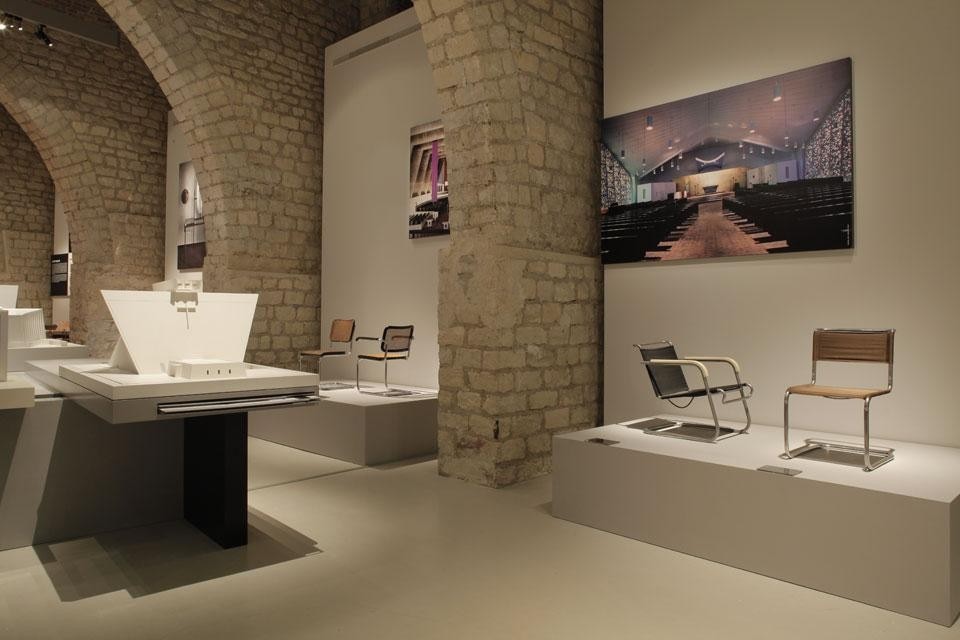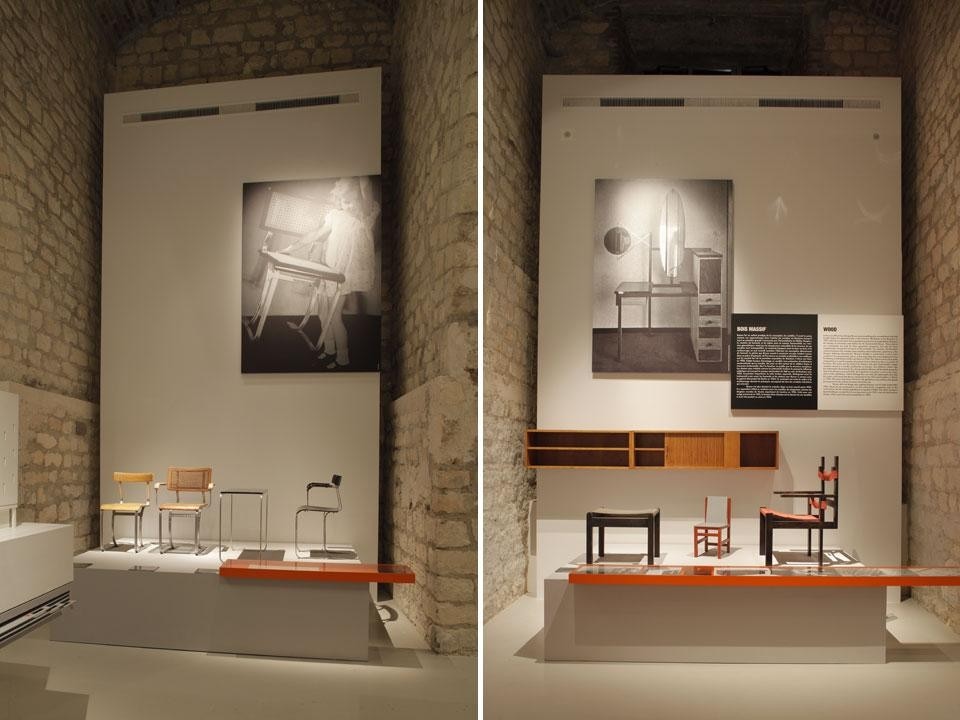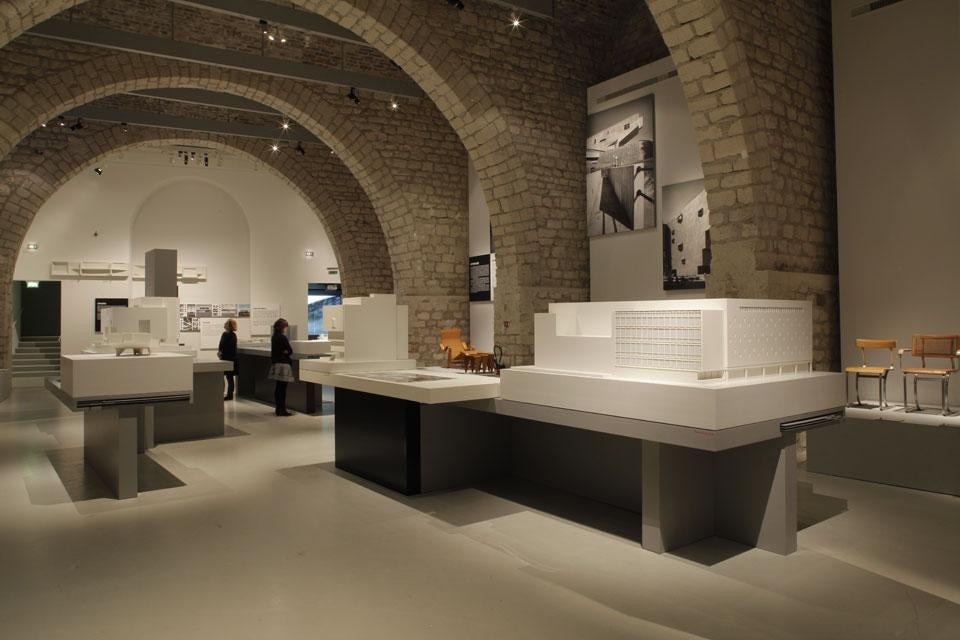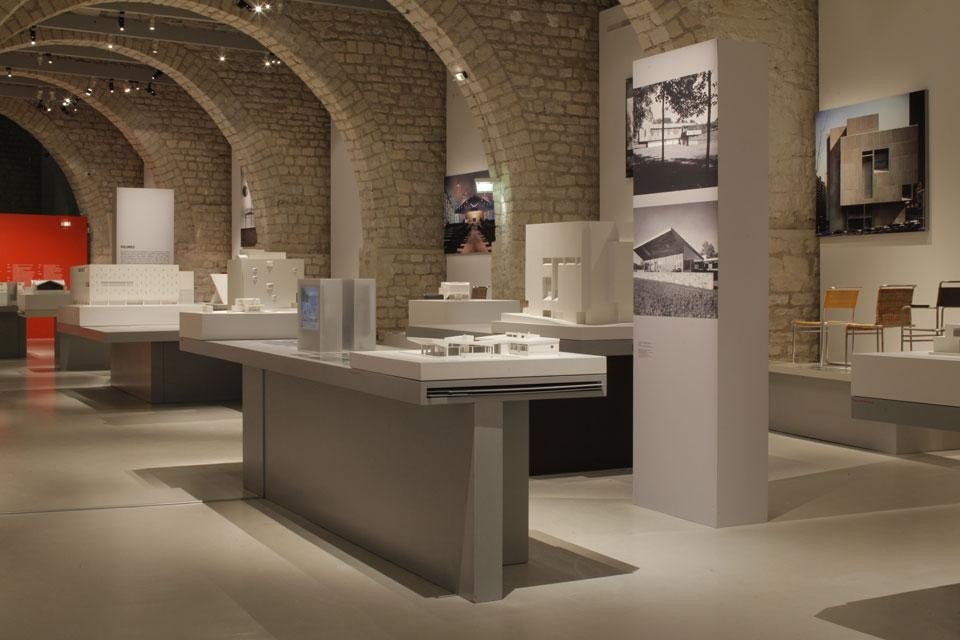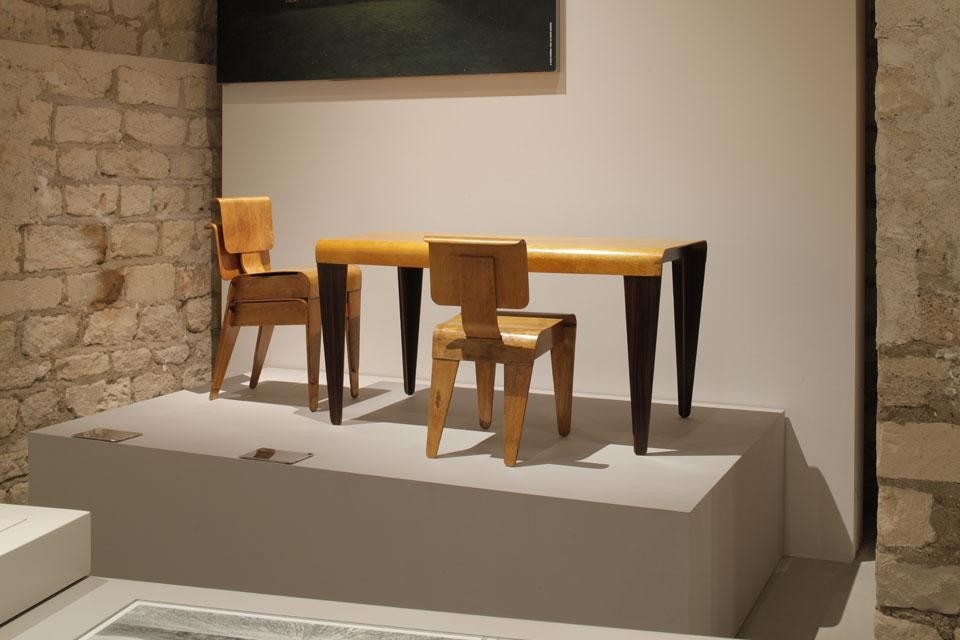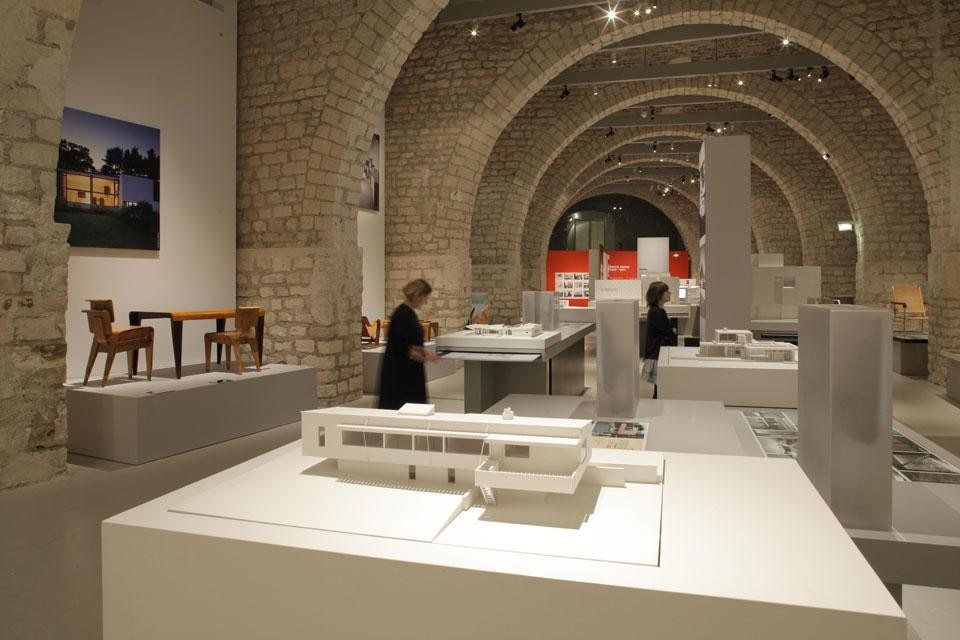After Germany, Austria, Hungary, Spain, Italy, Belgium, the UK, and the USA, Vitra's presentation of one of the most influential and important designers of the 20th century, Marcel Breuer, stops in the ville lumière, where it will remain until July 2013. Breuer's seminal contribution to the modern movement was the design of the Wassily tubular steel chair (or the Model B3 chair), which he produced when he was only 23 and the head of the cabinet-making workshop at the Bauhaus in Dessau. Yet, Lajko — as friends used to call him — considered himself to be first and foremost an architect. It is precisely this somewhat neglected part of Breuer's oeuvre that Vitra aimed to revive when first curating the show in 2003, making accessible Vitra's extensive collection of Breuer's work: one of the most comprehensive and complete surveys of his work.
A rather classical retrospective exhibition, Marcel Breuer: Design & Architecture combines a strictly chronological approach with a more thematically oriented one. The display is, however, innovative in its way of looking at Breuer's career. Here, he is presented as both architect and designer, with equal importance given to both disciplines. The periphery of the exhibition room, divided into four of Breuer's favourite materials — massive wood, tubular steel, aluminium and plywood — is filled with original pieces (furniture prototypes, drawings, and photographs), all linked to Breuer's work as an object designer. In contrast, the central space focuses on the larger scale (architecture), using copies as exhibition apparatus: reconstructed scaled models, photocopies of plans, photos, etc. All together, these artefacts communicate twelve architectural projects divided between three themes: "houses", "spaces", and "volumes". A regrettably timid attempt at reuniting object and building is at the very end of the exhibition space, in a section called "Motifs".
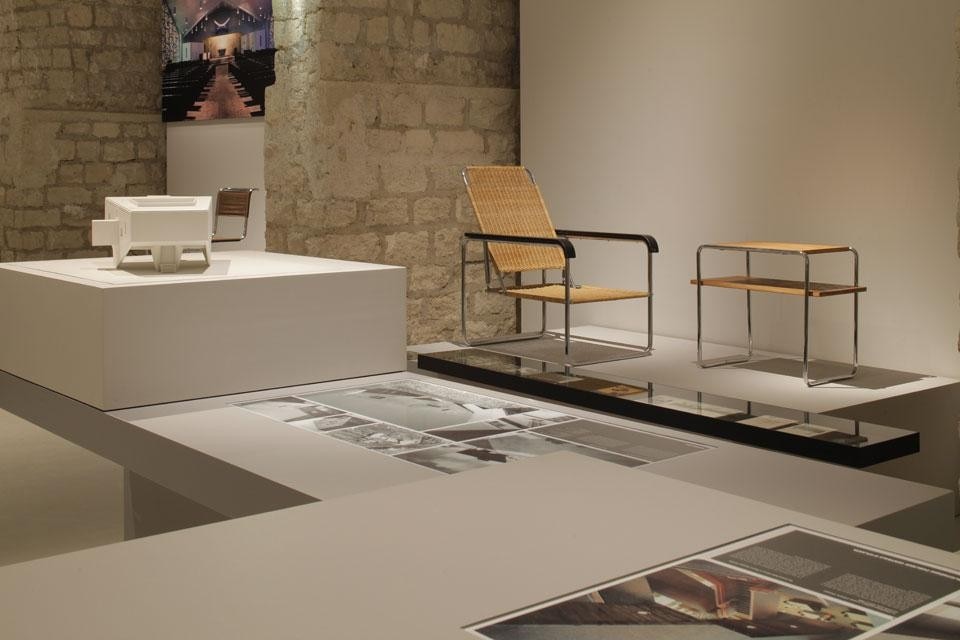
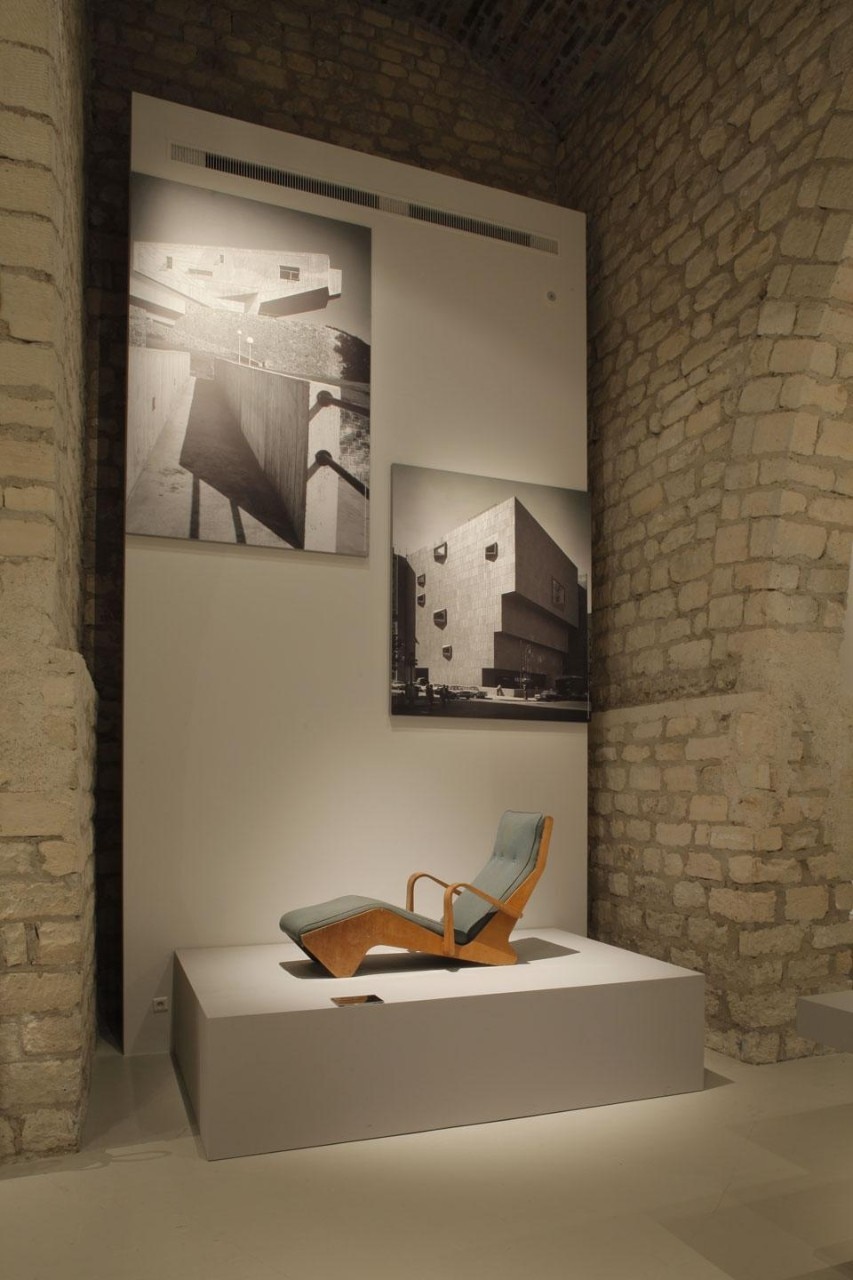
For its presentation at the Cité, Breuer's travelling show has been enriched by four French examples
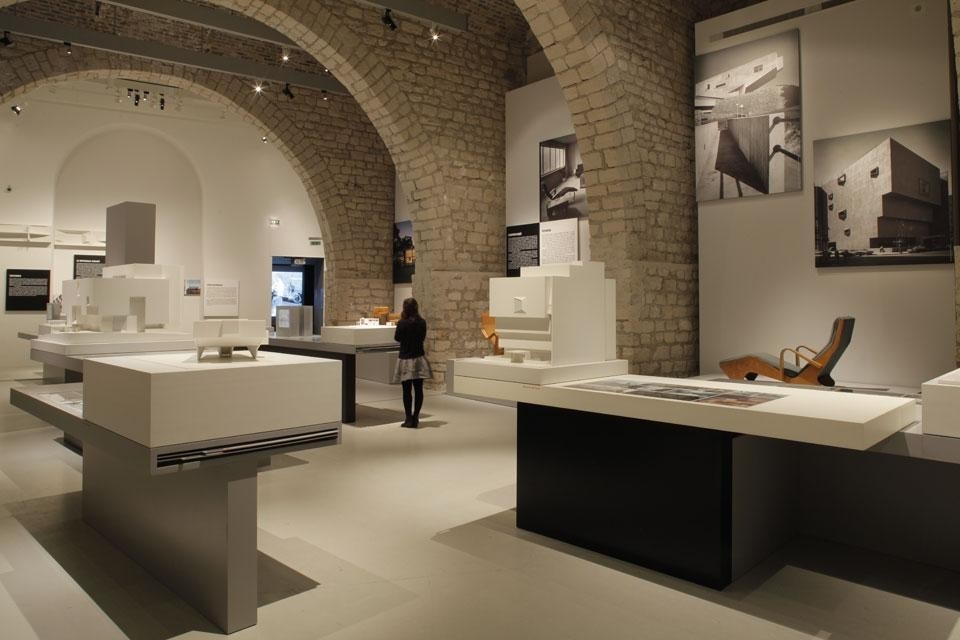
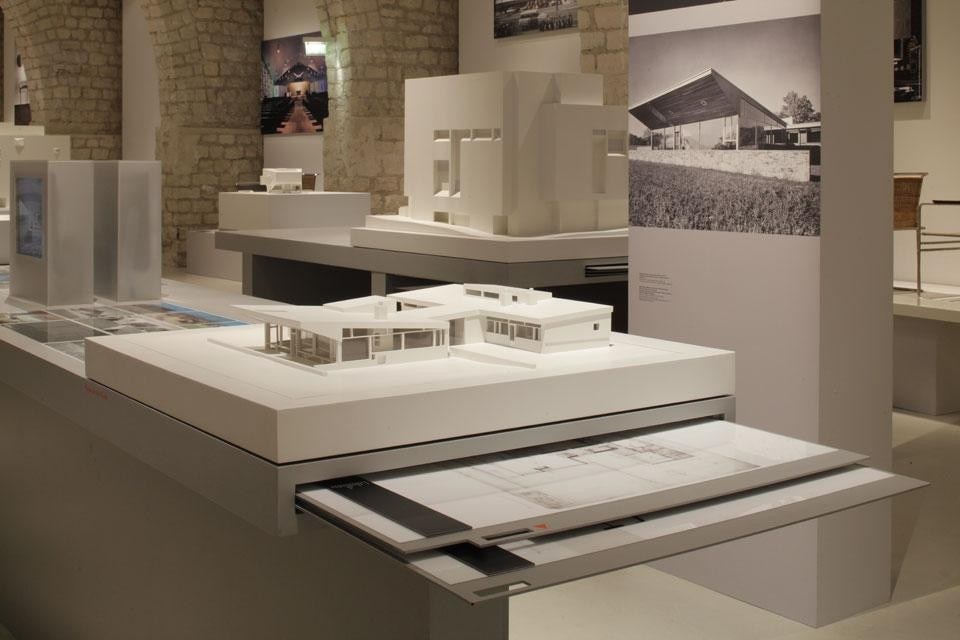
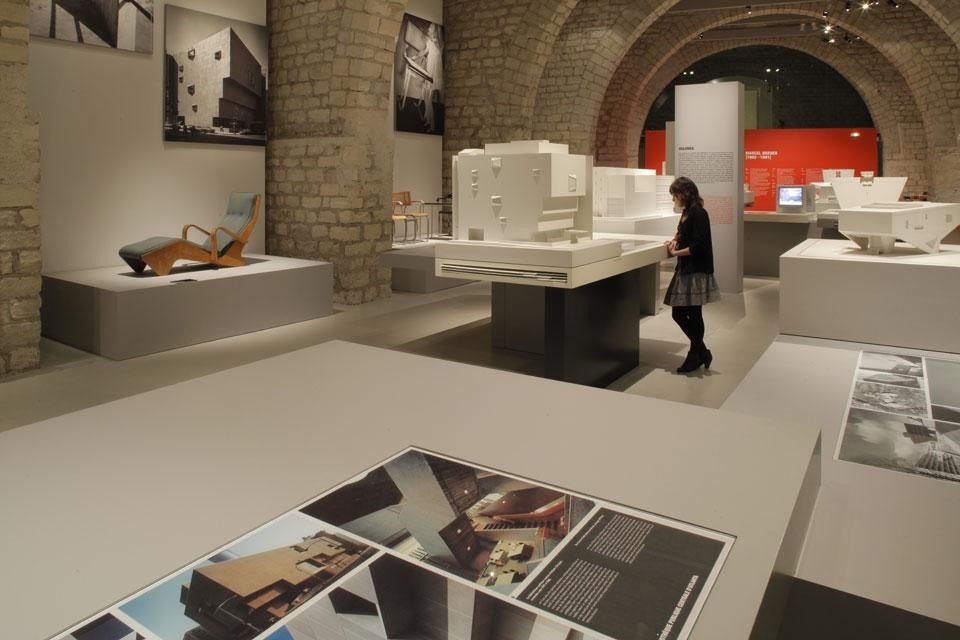
Marcel Breuer: Design & Architecture
Cité de l'architecture & du patrimoine
1 Place du Trocadéro et du 11 Novembre, Paris
